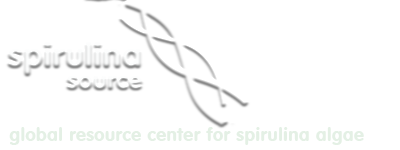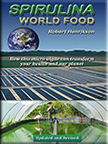REFERENCES AND ABSTRACTS BY HEALTH CATEGORY
Spirulina scientific reference library. Over 100 references covering 45 years of international research.
Availability of iron to rats from spirulina, a blue-green algae.
by P. Johnson and E. Shubert. 1986. Pub. in Nutrition Research Vol 6, 85-94. USA.
Spirulina contains a highly available form of of iron. It is unusual to find plant-derived iron that is highly available. Absorption of iron by rats and humans has been found to be highly correlated. Spirulina fed rats absorbed iron more than or equal to rats fed iron from an iron supplement, ferrous sulfate. In comparison, absorption of iron from potatoes and whole wheat bread is about half of ferrous sulfate. It appears spirulina is a fairly concentrated source of available iron.
Influence of extensive training on the number of erythrocytes and hemoglobin level and its correction.
by Z. Trojacanec et al. 1998. Institute for Medical, Experimental and Applied Physiology, Faculty of Medicine, Skopje, Macedonia. Pub in XXIV FIMS World Congress of Sports Medicine, June 1998.
Extensive training processes are very often followed by changes in blood composition. There is evidence of the high correlation between the training rate and intensity of exercise and the athlete’s hipochromy. In athletes we found a characteristic non-anemic iron deficit. Our goal was to monitor the hematological parameters in athletes with hipochromy and to examine the period of correction using iron supplementation. 20 male and 20 female athletes ages 18-22 years took part in the study. Blood samples were collected and the total number of erythrocytes, hemoglobin, serum iron and the staining index were calculated. All athletes received Earthrise Spirulina tablets, containing 1.5 mg Fe2+, 3 times a day for 2 months. Monitoring was done for 3 months. Significant changes were found in the female group for hemoglobin level, as well as increase of the serum iron and staining index. Distinct rise of the serum iron was observed in both male and female athletes. The clinical symptoms such as exhaustion, muscle fatigue and somnolence disappeared after the correction of the iron deficit. Addition of spirulina improves the prevention of non-anemic iron deficiency in athletes expecially females. Improvement of the iron reserves is a simple dietary modification that can optimize athletes health and physical capacity.
Clinical experiences of administration of spirulina to patients with hypochronic anemia.
by T. Takeuchi, et al. 1978. Tokyo Medical and Dental Univ. Japan.
Eight women had been limiting their meals to stay thin and were showing hypochronic anemia – lower than normal blood hemoglobin content. They took four grams of spirulina after each meal. After 30 days blood hemoglobin content increased 21% from 10.9 to 13.2, a satisfactory level, no longer considered anemic.
Iron transfer from spirulina to blood in rats.
by K. Takemoto, et al. 1982. Saitama Medical College. Japan.




